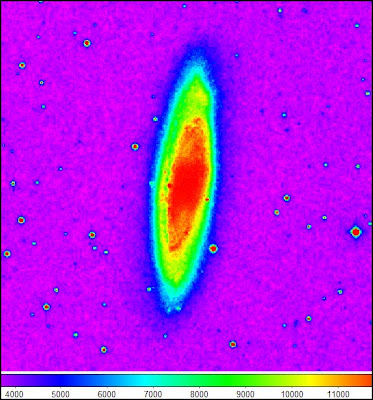
In the constellation of the Southern Cross, NGC 4755, about 10 million years old, 2000 parsecs away.
Imaged by Science Club Students at Pueblo HS in Tucson Arizona.
Takahashi Epsilon 180, 10 minute color exposure from Moorook Australia.
Many thanks to the Tzec Maun Foundation.
Imaged by Science Club Students at Pueblo HS in Tucson Arizona.
Takahashi Epsilon 180, 10 minute color exposure from Moorook Australia.
Many thanks to the Tzec Maun Foundation.

 Color-magnitude diagrams by Sanner et al., 2001
Color-magnitude diagrams by Sanner et al., 2001Note the very red star at the upper right corner, B-V ~ 2.2.










